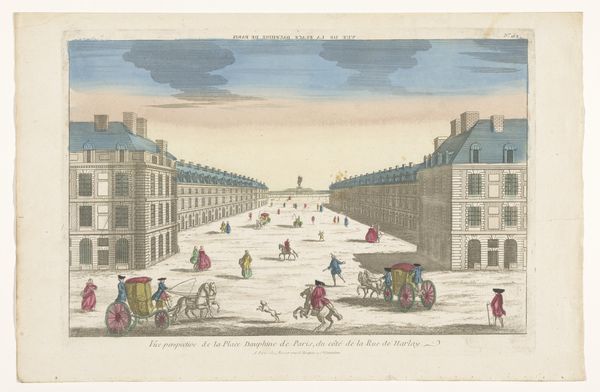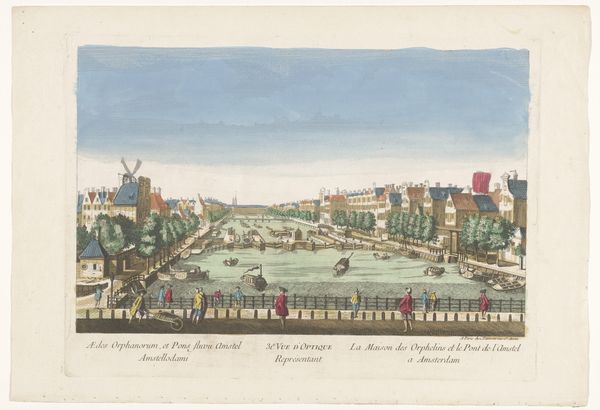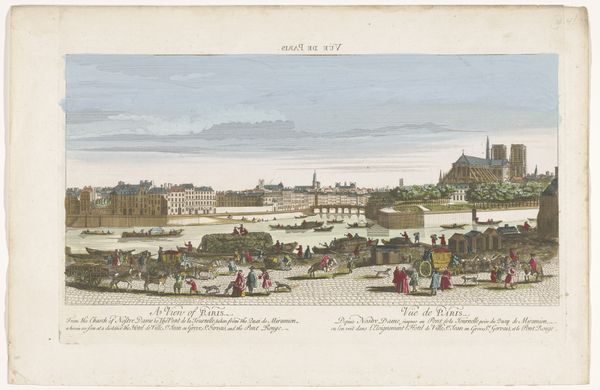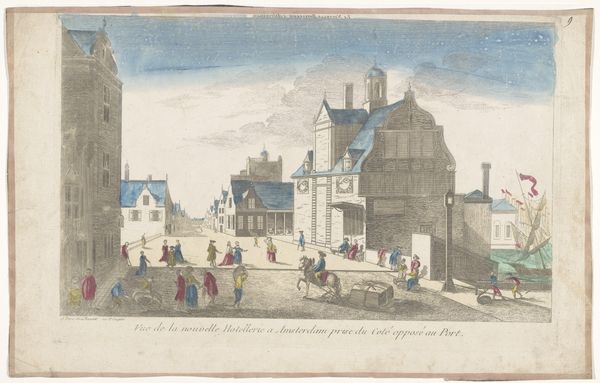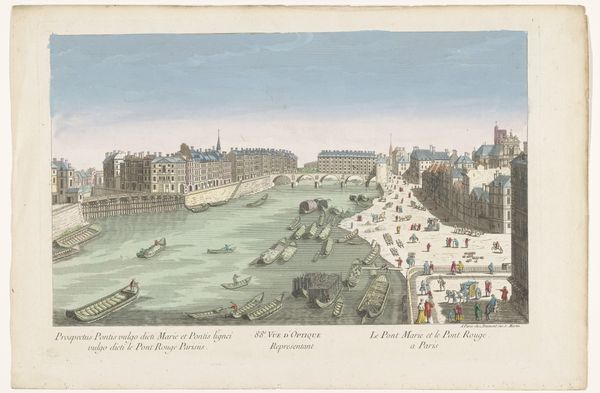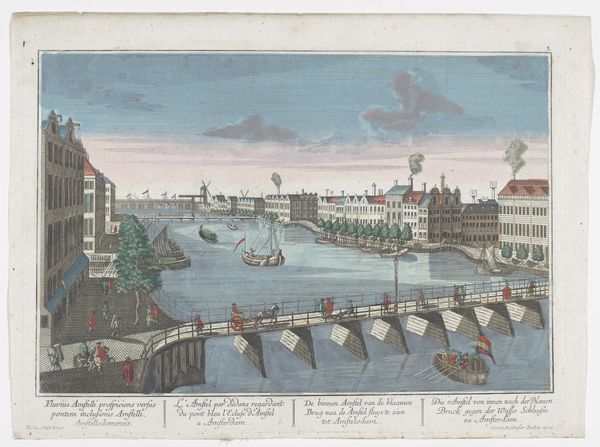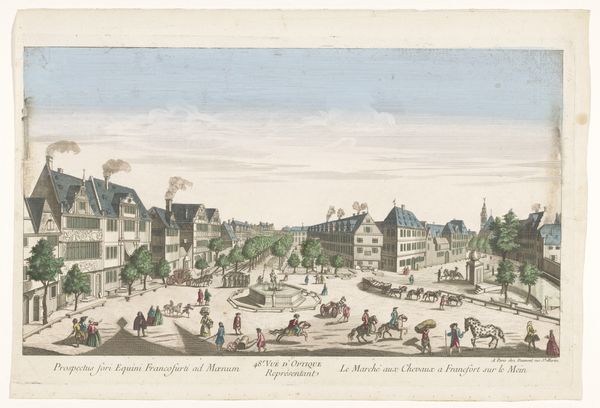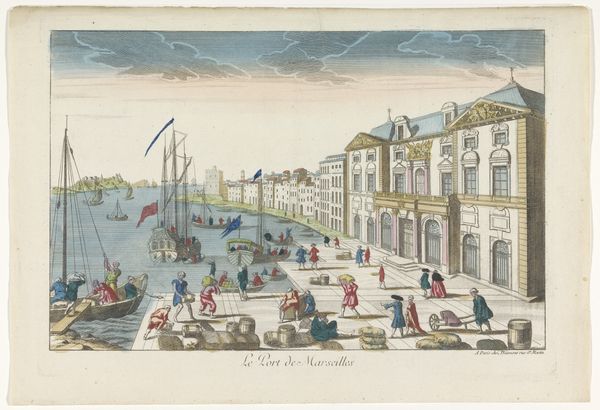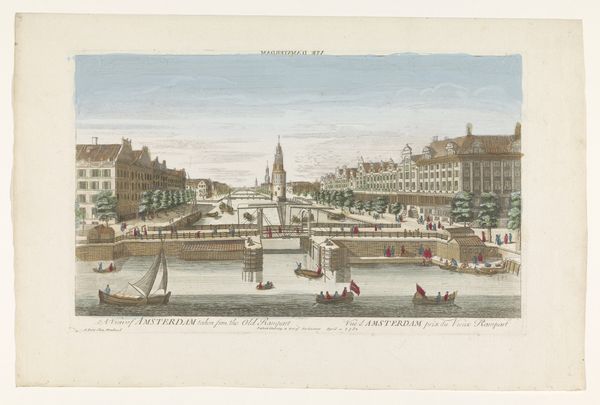
Gezicht op straten en een plein met een kerk in de omgeving van de stad Leiden 18th century
0:00
0:00
print, paper, engraving
#
narrative-art
#
baroque
#
dutch-golden-age
# print
#
landscape
#
perspective
#
figuration
#
paper
#
cityscape
#
genre-painting
#
engraving
Dimensions: height 291 mm, width 418 mm
Copyright: Rijks Museum: Open Domain
Editor: Here we have an 18th-century print titled "Gezicht op straten en een plein met een kerk in de omgeving van de stad Leiden," housed in the Rijksmuseum. It depicts a street scene filled with people. It’s rendered in this delicately colored engraving. The entire scene feels so orderly and...planned. How do you interpret this work, especially considering the time it was made? Curator: The orderly fashion might strike us today as staged or artificial, yet it represents a very deliberate worldview of the Dutch Golden Age bleeding into the eighteenth century. Consider the themes: we see genre painting, cityscapes, perspective. What isn't explicitly shown is as crucial as what is. It shows a society intent on projecting itself in a specific manner. Editor: What do you mean by "projecting itself?" Curator: How the Dutch wanted to be seen on the world stage. Notice the class distinctions meticulously placed throughout the frame. The elite strolling casually, the laborers working… What’s also striking is the church towering over them all. Do you think that reflects an aspect of the Dutch national identity at the time? How the church plays such a prominent role in their daily lives? Editor: Yes, that makes a lot of sense! It’s almost as if the print is saying, "Look at our organized society, guided by faith and structured social hierarchy!" I didn’t see that initially; thank you. Curator: Precisely! Think about this artwork as part of a broader conversation about power, representation, and the construction of national identity. The perspective invites us into their reality. Understanding that these visual languages served a social and political function. Editor: This conversation shifted my thinking about art. Thank you so much. Curator: Always a pleasure to explore art with a curious mind, uncovering what these cultural records can teach us!
Comments
No comments
Be the first to comment and join the conversation on the ultimate creative platform.
